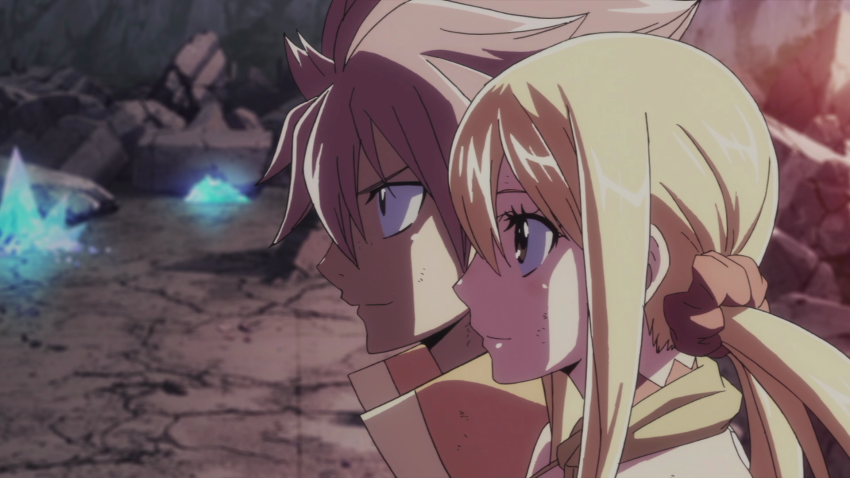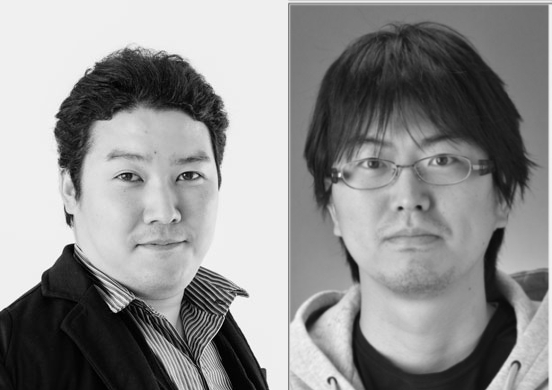Fairy Tail: Dragon Cry
May 19, 2018 · 1 comment
By Andrew Osmond.

Naughty anime transformation scenes… Good, that’s got your attention. If you saw Fairy Tail: Dragon Cry, you might have noticed a fine specimen of the type, when the cat character Carla takes human form. However, this clothes-changing fan service caused problems, as revealed by Dragon Cry director Tatsuma Mianamikawa and producer Yohei Ito when they guested at London’s MCM Comic Con. As well as holding a lively convention panel, they kindly answered some further questions from AllTheAnime… including more on naughty transformations.
Born in Fukuoka (capital of Japan’s south island Kyushu), the 32 year-old Minamikawa seems one of the jolliest anime directors we’ve seen. We can’t remember another director cheerily announcing at the start of his panel that he’s looking for a girlfriend. Maybe his good mood was just relief at seeing his film finished and in cinemas. Dragon Cry is represents Minamikawa’s first time on Fairy Tail – he never worked on the long-running TV show. Given how lucrative the franchise is, and given Dragon Cry has been rolling out all around the world, the pressure on him must have been immense.
However, Minamikawa explains, the director duties weren’t just on his shoulders. “There were other new directors (on Dragon Cry)”, he explains. “I was responsible for about half the film, and the other directors were responsible for the other sections. But they hadn’t been involved in Fairy Tail before either – they were first timers like I was. But because of their abilities as directors, I trusted they would be able to handle it. And I thought that if they did slightly ‘go off’ from the anime series, then I would be able to sort that out afterwards.”
 Minamikawa (left) highlights the hugely collaborative nature of anime, where even directors often operate as part of a team. Before Dragon Cry, one of Minamikawa’s jobs had been as one of a trio of Unit Directors. Together, they tackled part 8 of the original Attack on Titan anime. Fans will recall that involves a massive battle with multiple Titans, and a series-defining twist – it’s the episode ending with the normally bad-ass Mikasa bawling her heart out.
Minamikawa (left) highlights the hugely collaborative nature of anime, where even directors often operate as part of a team. Before Dragon Cry, one of Minamikawa’s jobs had been as one of a trio of Unit Directors. Together, they tackled part 8 of the original Attack on Titan anime. Fans will recall that involves a massive battle with multiple Titans, and a series-defining twist – it’s the episode ending with the normally bad-ass Mikasa bawling her heart out.
Minamikawa remembers working so hard on the episode that he slept at the studio until the project was done. Ito (right) was involved on Titan as well, as producer, and had what sounds like an even harder time. A married man, he claims that because he didn’t get home from Titan, his wife suspected he was cheating on her! On Ito’s story, she even tried to trace him through a phone app – unfortunately, the app wasn’t dead-on about locations, and Ito’s office happened to be near an all-women’s college. There’s a good comedy script in that…
“Regarding the Fairy Tail manga, we were already in a situation where the readers abroad are able to read the manga at more or less the same time as the Japanese readers. So, because the film comes just as the manga is drawing to an end, it fits into that part of the story, so we naturally wanted overseas audiences to be able to see the film at the same time as the audiences in Japan.”
However, the international scale of the release caused an amusing problem. Yes, I’m talking about the saucy female transformation scene. On the panel, Minamikawa revealed the original version of the scene was more explicit – but Ito told him to “cover up” and reduce the scene’s fanservice, in case it caused problems with foreign markets. Given Fairy Tail as a whole has a reputation for fan service, I wondered just how explicit the original transformation had been.
Both Ito and Minamikawa laugh when we raise the question. “There wouldn’t have been any problem in Japan,” says Ito, “and I don’t suppose there would have been any problem in North America, or in the U.K. or in Europe. But where I did think it might have caused problems was in the rest of Asia, if there had been too much exposed flesh. Even though the scene is not meant to be titillating, it could have been used as an excuse to not screen the film, or to stop younger people from watching it. I was reluctant to trim it, but I thought it was the best thing to do.”
Minamikawa adds: “If we’d had time, we could have gone to each country’s film standards board and checked exactly how much we could do. But because we wanted the film to be launched around the world at the same time, because it was so down to the wire – which is my fault – we had to go with a version that we thought would be safe everywhere, and we stayed back from the line.”
Fairy Tail: Dragon Cry is released in the UK by Anime Limited.
anime, Attack on Titan, Dragon Cry, Fairy Tail, interview, Japan, Tatsuma Minamikawa, Yohei Ito
Animescience101
May 19, 2018 5:45 pm
Very interesting. I didn't realize things where changed to take acount for cultural differences.